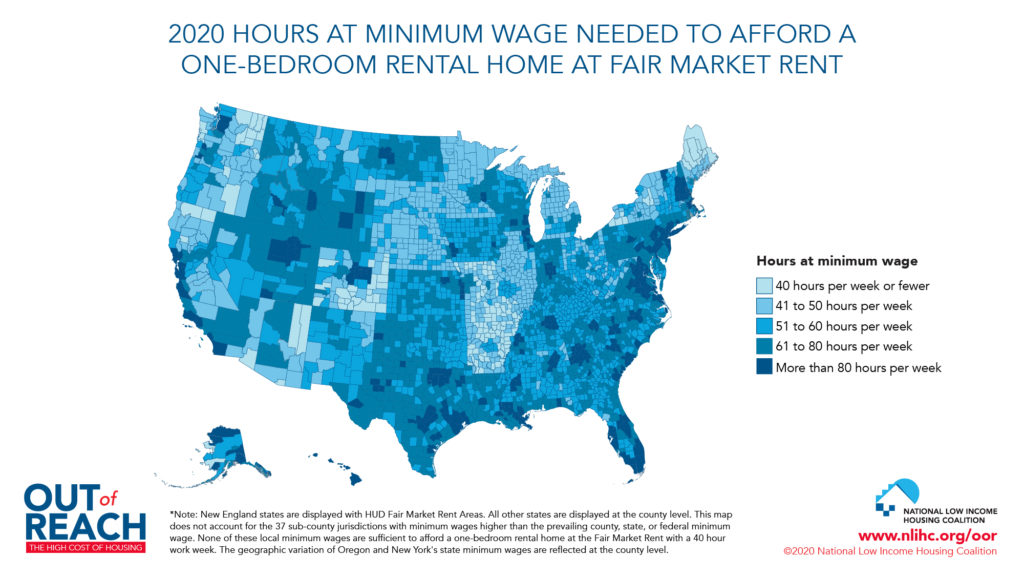Full-time workers in the Orlando metropolitan area need to make $24 an hour to afford a two-bedroom rental home without spending more than the recommended 30% of their income, according to a report from the National Low Income Housing Coalition.
This number is greatly at odds with Florida’s minimum wage of $8.56 an hour. As it stands, a worker who makes minimum wage would need to work 112 hours a week to afford rent in Central Florida for a two-bedroom rental home.
In fact, full-time workers who make minimum wage can’t afford a two-bedroom rental home in any U.S. state without spending more than the recommended 30% of their income.
“Housing is a basic human need, but millions of people in America cannot afford a safe, stable home,” said NLIHC President and CEO Diane Yentel in a press release. “The harm of this enduring challenge is laid bare during the COVID-19 pandemic, when millions of people in America risk losing their homes.
“The lack of affordable homes for the lowest-income people is one of our country’s most urgent and solvable challenges, during and after COVID-19; we lack only the political will to fund the solutions at the scale necessary. It’s time for Congress to act.”
Rent that exceeds 30% of a person’s income is considered unaffordable. When housing costs such a large share of a person’s income, little is left for other needs, including food, healthcare, and transportation.
Habitat for Humanity Greater Orlando & Osceola County ensures that our homeowners’ monthly mortgages don’t exceed 30% of their income. We help local people permanently remove themselves from the brutal competition for affordable rental housing – and help them instead thrive as homeowners. We want to make sure that essential workers can afford rent in Central Florida.
A new home, fair mortgage, nominal down payment, small energy bills, low maintenance for years, and potential homeowner tax deductions make this the ideal way for families to make gains in health, education, and financial stability – for generations.
Most Habitats build one or two homes per year, while we build neighborhoods at a rate of about 30 new homes and repair about 80 homes in low–income areas each year. This makes us one of the top 20 “Super Habitats” for our rate of production out of about 1,300 affiliates in the U.S.
We want to continue building as our community deals with the effects of COVID-19 – and build more homes in the future. Join us in building back stability and security through affordable housing by become a donor or an advocate.

